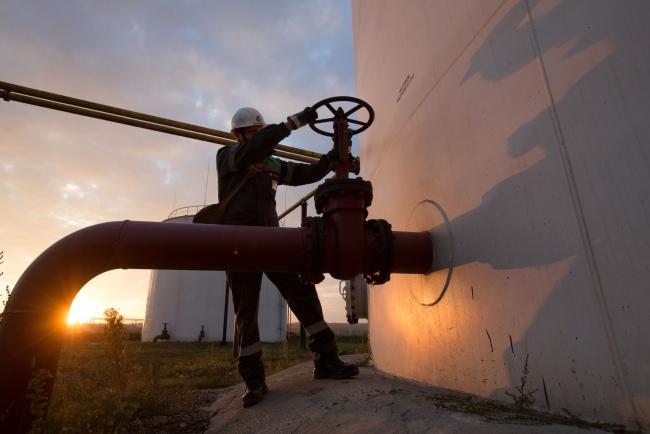(Bloomberg) -- Oil held gains after rallying almost 8% in three days as investors weighed mixed signals from the White House on Iran and signs that an extension of the OPEC+ production cuts may not be a fait accompli.
Futures in New York edged lower after closing up 0.8% on Monday. President Donald Trump imposed sanctions on Iran’s supreme leader, Ayatollah Ali Khamenei, Monday, while also asking in a tweet why the U.S. is protecting the Strait of Hormuz, the world’s most important oil choke-point. Russia suggested it’s taking wait-and-see approach on the OPEC+ output deal before the G-20 summit in Japan at which Trump will meet with Chinese President Xi Jinping.
Oil has jumped about 13% since mid-June as rising tension between the U.S. and Iran spurred concern there could be disruptions to global energy flows or even outright war. That reversed a decline driven by an escalation in the trade conflict between Washington and Beijing. The Trump-Xi meeting this week and the gathering of the Organization of Petroleum Exporting Countries and allied producers days later in Vienna may provide fresh direction for the market.
“Investors are taking a wait-and-see stance, as it’s not certain how things will go at the G-20 summit,” said Jun Inoue, a senior economist at Mizuho Research Institute Ltd. in Tokyo. “Concern over the economic slowdown means WTI oil prices aren’t likely to rise to $65, or even $60, unless there’s a rapid escalation of tensions in the Middle East or major progress in the trade talks.”
West Texas Intermediate for August delivery fell 5 cents, or 0.1%, to $57.85 a barrel on the New York Mercantile Exchange at 9:41 a.m. in Singapore. The contract has rallied 7.7% over the previous three sessions.
Brent for August settlement added 6 cents to $64.92 a barrel on London’s ICE (NYSE:ICE) Futures Europe Exchange. It dropped 34 cents, or 0.5%, on Monday. The benchmark crude contract traded at a premium of $7.07 to WTI.
